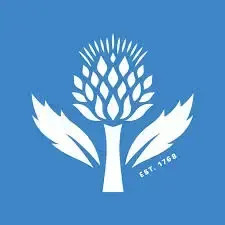Bolivia, a landlocked country in the heart of South America, is renowned for its breathtaking and diverse geography. Understanding where Bolivia is located is key to appreciating its varied landscapes, from towering Andean peaks to lush Amazonian lowlands. This article delves into the geographical regions of Bolivia, offering a comprehensive exploration of its unique terrain and highlighting why its location makes it such a fascinating country.
Bolivia’s western region is dominated by the majestic Andes Mountains, one of the world’s highest inhabited areas and a significant economic and political hub. Here, the Andes reach their widest and most complex form, characterized by two parallel ranges. The Cordillera Occidental, bordering Chile, is marked by numerous active volcanoes and the stunning Uyuni Salt Flat, the world’s largest salt flat. This range is crowned by Mount Sajama, Bolivia’s highest peak, soaring to 21,463 feet (6,542 meters).
To the east rises the Cordillera Oriental, known as the Cordillera Real near La Paz, its northern section. This “Royal Range” boasts an impressive chain of snow-capped peaks, some exceeding 20,000 feet (6,100 meters), maintaining an average elevation of over 18,000 feet (5,500 meters) for more than 200 miles (320 km).
 Uyuni Salt Flat in Bolivia
Uyuni Salt Flat in Bolivia
Nestled between these two formidable ranges lies the Altiplano, or “High Plateau.” This vast plateau stretches from southern Peru, through Bolivia, and into northern Argentina. A relatively flat depression, approximately 500 miles (800 km) long and 80 miles (130 km) wide, the Altiplano sits at a lofty elevation between 12,000 and 12,500 feet (3,650 and 3,800 meters). North of the Cordillera Real, the Apolobamba range is home to lakes and protected areas where vicuñas, alpacas, and llamas flourish. Ancient terraced fields dot the foothills of snow-covered peaks, places held sacred by indigenous communities for centuries.
The Altiplano’s surface is primarily composed of deposits carried by water and wind from the surrounding mountains. It gently slopes southward, its flatness occasionally interrupted by hills and ridges. The edges of the Altiplano are defined by spurs and alluvial fans, formed by sediment washed down from the mountains. Within the Altiplano, Lakes Titicaca and Poopó and their basins have historically been vital centers for agriculture, economy, and culture.
Descending from the snow-capped Cordillera Real and Apolobamba range towards the east, the terrain dramatically plunges into the Yungas. This region is a rainy, densely forested belt of rugged terrain. The Yungas, an Aymara term for “Warm Lands” or “Warm Valleys,” marks the southern extent of a region that extends along the eastern Andes through Colombia, Ecuador, and Peru (where it’s known as Alto Selva or “High Rainforest”). In Bolivia, Yungas often specifically refers to the region northeast of La Paz, adjacent to Alto Beni, part of the larger Yungas region.
In southern Bolivia, the Andes broaden into the Puna, a high, tilted block characterized by west-facing escarpments and gentler eastward slopes leading down to the plains. The Puna is interspersed with the Valles, a system of fertile valleys and mountain basins. These valleys, generally larger and less confined than those in the Yungas, lie between 6,000 and 9,500 feet (1,800 and 2,900 meters). They are known for their diverse agriculture and host the garden cities of Cochabamba, Sucre, and Tarija.
North and east of the Andes and Yungas lies the Oriente region. This vast area, an extension of the Amazon River basin, covers over two-thirds of Bolivia. The Oriente consists of low alluvial plains (llanos), extensive swamps, flooded bottomlands, open savannas, and tropical forests. It boasts Bolivia’s greatest biodiversity and is home to the largest population center, Santa Cruz city, and Bolivia’s fastest-growing regional economies. In the far south, the Bolivian Chaco, part of the Gran Chaco, is a flat area with stark seasonal variations, transforming from a swamp in the rainy season to a hot semidesert for most of the year. Moving north from the Chaco into the Santa Cruz department, the terrain becomes more varied with a gentle northward slope. The Oriente encompasses much of the northern departments of Beni and Pando, where savannas and, further north, tropical rainforests dominate the low plains.
In conclusion, Bolivia’s geographical location in South America defines its incredible diversity. From the towering Andes and the high Altiplano in the west to the Yungas, Valles, and the expansive Oriente including the Chaco in the east, Bolivia offers a remarkable range of landscapes and ecosystems, making it a geographically rich and fascinating country to explore.

